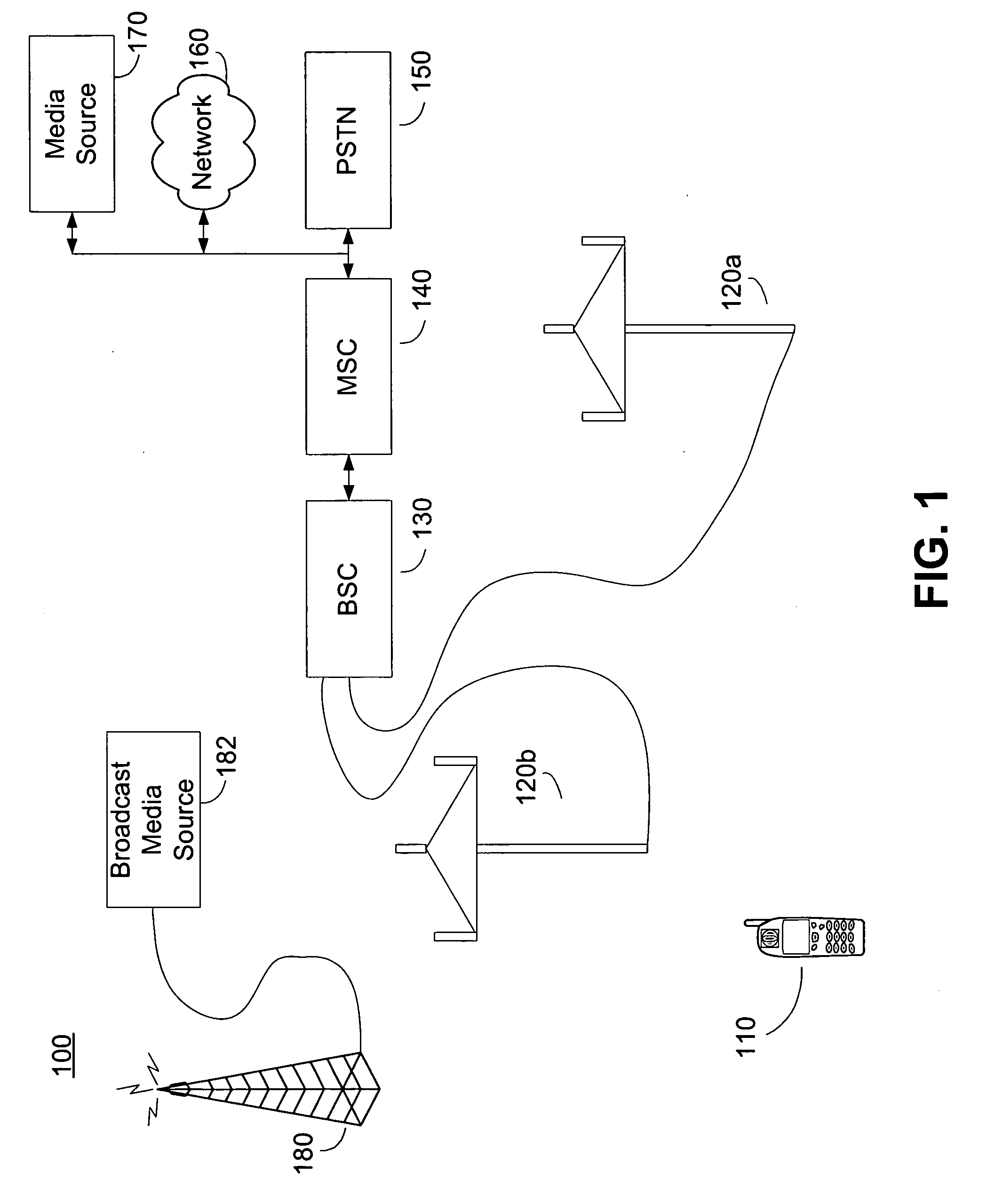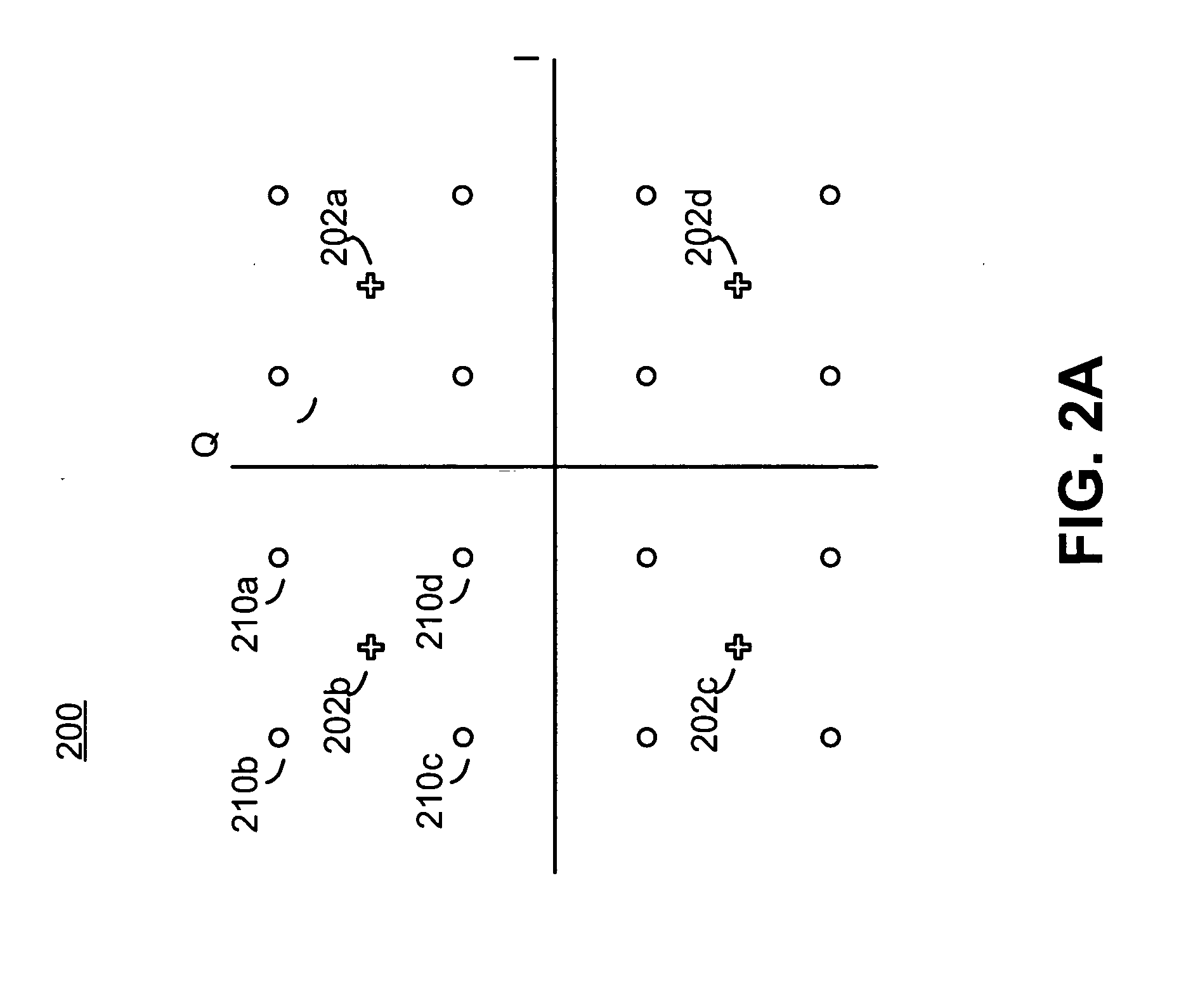Adaptive channel estimation thresholds in a layered modulation system
a layered modulation and channel estimation technology, applied in the field of adaptive channel estimation thresholds in layered modulation systems, can solve the problems of limited processing capacity or limited power capacity, less than ideal, and substantially complicating the operation of layered modulation signals
- Summary
- Abstract
- Description
- Claims
- Application Information
AI Technical Summary
Benefits of technology
Problems solved by technology
Method used
Image
Examples
Embodiment Construction
[0031] The disclosed embodiments provide methods and apparatus for adaptively or otherwise dynamically determining a channel estimation threshold value. A receiver can adaptively or dynamically determine the channel estimation threshold value based on a quality of service of the received signal. A receiver can determine a quality of service or signal quality on a base layer or some other lower layer of a layered modulation signal. The receiver can also determine a quality of service or signal quality on an enhancement layer or some other upper layer of the layered modulation signal. The receiver can compare the quality of service against predetermined quality of service thresholds and can adjust or otherwise vary the channel estimation threshold based on the received quality of service.
[0032] The threshold value can be varied using at least the error rate in the base layer in order to determine the threshold value for channel estimation when two or more layers are transmitted in a ...
PUM
 Login to View More
Login to View More Abstract
Description
Claims
Application Information
 Login to View More
Login to View More - R&D
- Intellectual Property
- Life Sciences
- Materials
- Tech Scout
- Unparalleled Data Quality
- Higher Quality Content
- 60% Fewer Hallucinations
Browse by: Latest US Patents, China's latest patents, Technical Efficacy Thesaurus, Application Domain, Technology Topic, Popular Technical Reports.
© 2025 PatSnap. All rights reserved.Legal|Privacy policy|Modern Slavery Act Transparency Statement|Sitemap|About US| Contact US: help@patsnap.com



